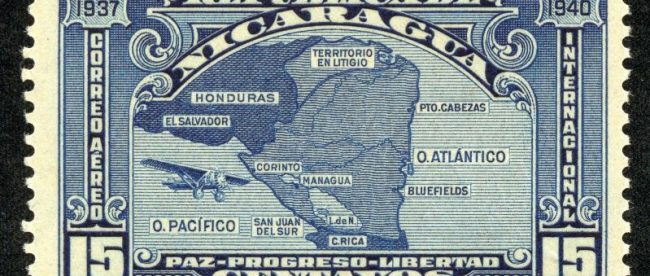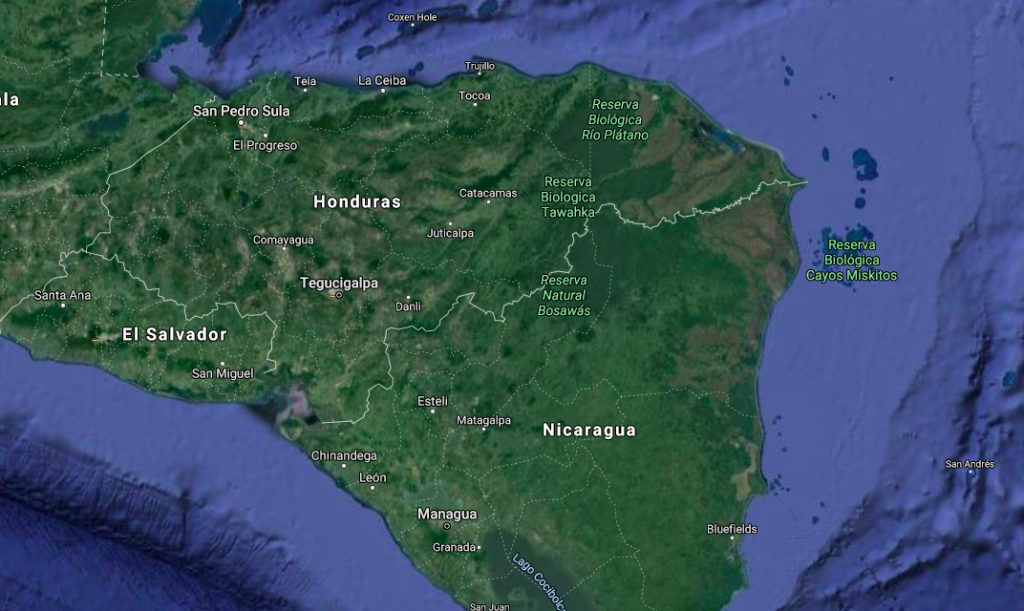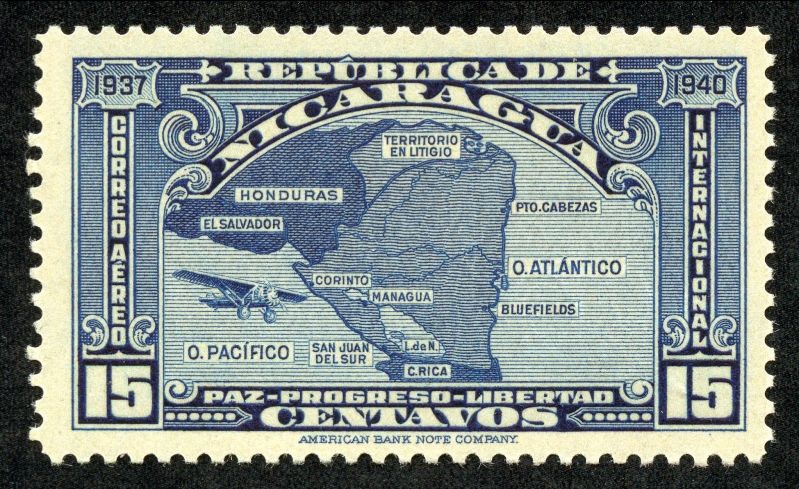How Postage Almost Started a War


Honduras and Nicaragua are Central American countries which, if you look at the map right, above, now, don’t seem to be having many issues getting along. They share a border, yes, and that border is quite squiggly, sure. It’s there, with lots of jagged points and weird bends which don’t seem to make a lot of sense, terrain notwithstanding.
And for the most part, the two nations are generally peaceful neighbors. But that wasn’t always the case. In 1937, for example, the image below almost caused the two nations to blow one another up.

That’s a picture of a postage stamp, issued by Nicaragua (as the stamp clearly notes) in August of 1937. It’s one of a few Nicaraguan stamps from that year, and like the 10 centavos stamp (seen here), it has a map of the issuing country smack in the middle. It’s not something that should anger anyone… except for that weird thing in the northeast of the country. That grey-shaded area toward the top-middle of that stamp reads “Territorio en Litigio,” which translates to “Territory in Dispute.” That was new to Honduras, which claimed sovereignty over that area of the map.
Big deal? It was to rank-and-file Hondurans, who were not happy. At all. According to the Big Think, “when the first airmail letters from Nicaragua bearing the offending stamp reached the Honduran capital Tegucigalpa, riots erupted. Honduran police had to make great efforts to prevent an angry mob from storming the Nicaraguan Embassy.” And while the police were successful, the authorities didn’t simply let the matter disappear; the New York Times reported (pdf) that “Honduras [forbade] the delivery” of any mail using the stamp. Nicaragua retaliated in kind, “forbidding the delivery of Honduran mail carrying a Honduran air-mail stamp deemed offensive to Nicaragua,” per the Times. (It goes unreported, but it’s likely that Nicaraguans weren’t really offended by a Honduran stamp; they just needed something to feign anger about.)
A postal stalemate now developing, Honduras decided to approach Nicaragua directly, demanding their neighbor retract the offending postage. And then Honduras raised the ante. According to the book “A Study of Crisis,” on August 30th, Honduras sent troops through the so-called disputed territory, positioning its army on what it believed to be the Nicaraguan border. Four days later, Nicaragua responded: not only would it not withdraw the stamps, but it, too, sent troops to the border.
Within a few days, both nations, per the Times, censored reports of the potential skirmish, ordering local radio stations “to cease broadcasting about the boundary dispute.” Perhaps this was a sign that neither side wanted their respective shows of force to escalate further, and thankfully, not actual fighting ever broke out. Representatives from Costa Rica, Venezuela, and the United States stepped in to broker an agreement, and in December of that year, the two would-be combatants put pen to paper, keeping the peace on the process. The stamps were not re-issued in 1938.
Bonus fact: The Nicaraguan flag, seen here, has the national coat of arms in its center. The coat of arms contains a rainbow on it, and as a result, there’s a little bit of purple on the Nicaraguan flag. That’s extremely rare — only two sovereign nations have purple on their flags. (The other is Dominica, a Caribbean nation not to be mistaken for the Dominican Republic. Its flag, here, features an illustration of a purple Sisserou Parrot, which is native to the island.)
From the Archives: The Soccer Match that Sparked a War: Honduras, again, but not Nicaragua. (El Salvador, this time.)
